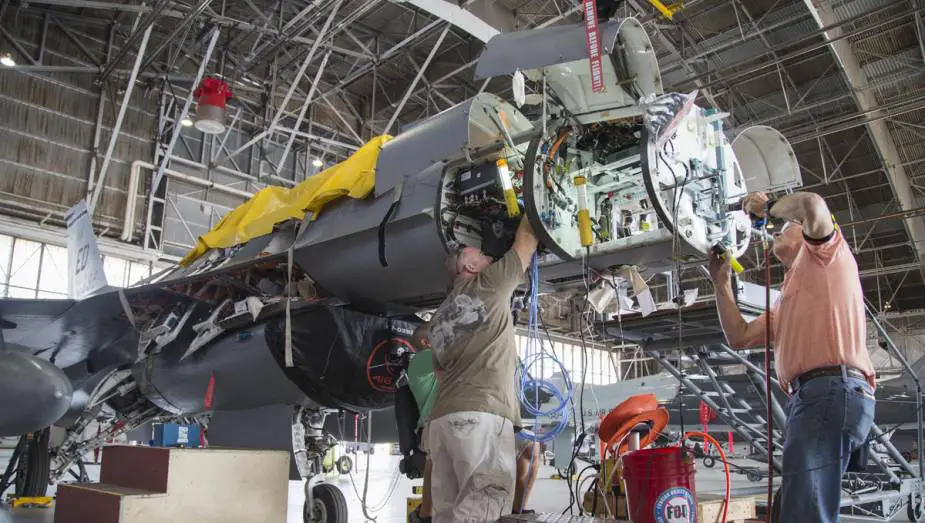Breaking news
Northrop Grumman to further develop Active Electronically Scanned Array radars of USAF F-16s.
The U.S. Department of Defense on April 27 announced that Northrop Grumman Systems Corp. has been awarded a $28,662,064 cost-plus-fixed-fee modification to contract FA8615-17-C-6047 for Active Electronically Scanned Array (AESA) radars of U.S. Air Force F-16 aircraft. This modification is for continued radar development. The modification brings the total cumulative face value of the contract to $1,509,974,169.
Follow Air Recognition on Google News at this link
 Northrop Grumman technicians install an APG-83 SABR active electronically scanned array (AESA) radar in an F-16 test aircraft at Edwards AFB in 2020 (Picture source: Northrop Grumman)
Northrop Grumman technicians install an APG-83 SABR active electronically scanned array (AESA) radar in an F-16 test aircraft at Edwards AFB in 2020 (Picture source: Northrop Grumman)
Work will be performed in Linthicum Heights, Maryland, and is expected to be completed on April 28, 2025. Fiscal 2022 research, development, test and evaluation funds in the amount of $8,624,197, for a total of $1,445,401,537, are being obligated at the time of award. Air Force Life Cycle Management Center, Wright-Patterson Air Force Base, Ohio, is the contracting activity.
An active electronically scanned array (AESA) is a type of phased array antenna, which is a computer-controlled array antenna in which the beam of radio waves can be electronically steered to point in different directions without moving the antenna. In the AESA, each antenna element is connected to a small solid-state transmit/receive module (TRM) under the control of a computer, which performs the functions of a transmitter and/or receiver for the antenna. This contrasts with a passive electronically scanned array (PESA), in which all the antenna elements are connected to a single transmitter and/or receiver through phase shifters under the control of the computer. AESA's main use is in radar, and these are known as active phased array radar (APAR).
The AESA is a more advanced, sophisticated, second-generation of the original PESA phased array technology. PESAs can only emit a single beam of radio waves at a single frequency at a time. The PESA must utilize a Butler matrix if multiple beams are required. The AESA can radiate multiple beams of radio waves at multiple frequencies simultaneously. AESA radars can spread their signal emissions across a wider range of frequencies, which makes them more difficult to detect over background noise, allowing ships and aircraft to radiate powerful radar signals while still remaining stealthy, as well as being more resistant to jamming. Hybrids of AESA and PESA can also be found, consisting of subarrays that individually resemble PESAs, where each subarray has its own RF front end. Using a hybrid approach, the benefits of AESA (e.g., multiple independent beams) can be realized at a lower cost compared to pure AESA.


























